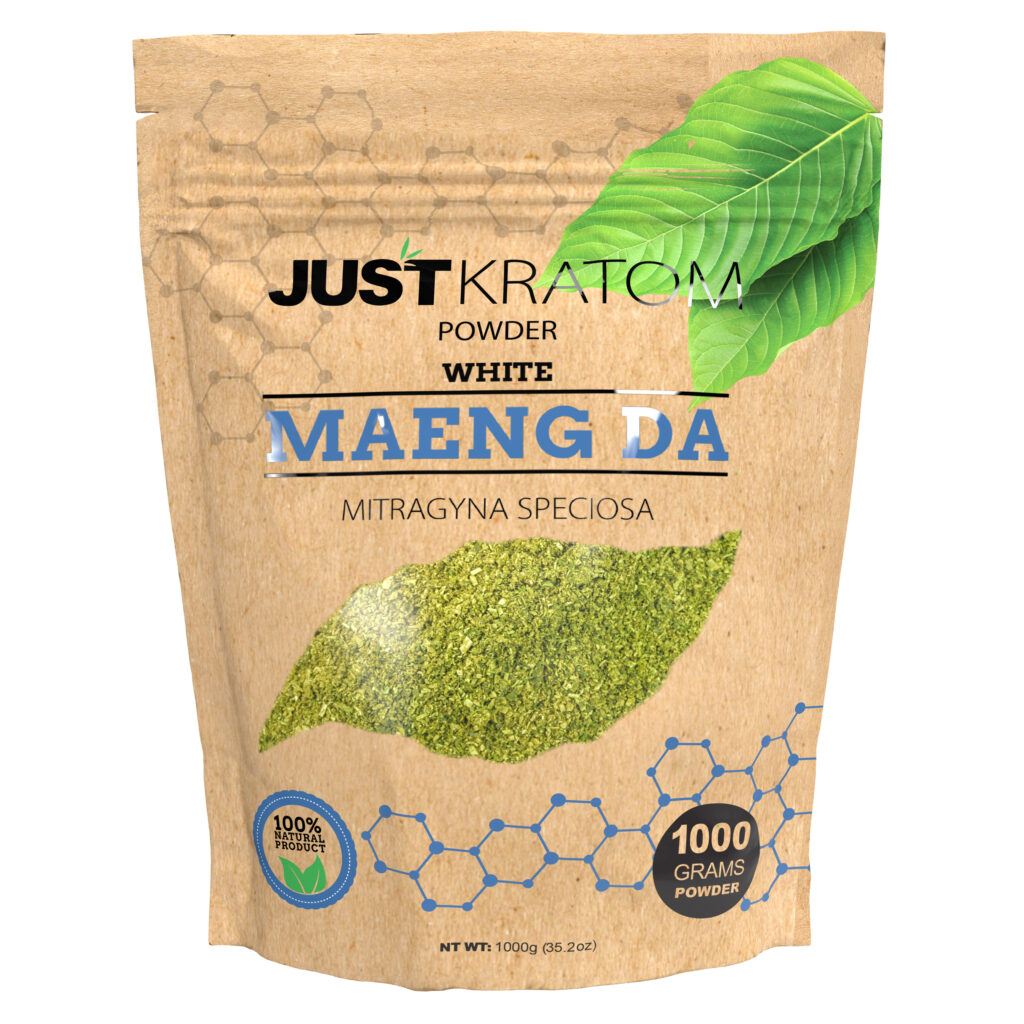Kratom Powder For Migraines: What The Science Says
Potential Benefits of Kratom for Migraine Relief
Migraines are debilitating neurological disorders characterized by intense, throbbing headaches often accompanied by nausea, vomiting, and sensitivity to light and sound. While various treatments exist, some individuals seek alternative therapies like kratom, a tropical plant with potential pain-relieving properties. Research on kratom’s efficacy in migraine management is still emerging, but preliminary studies suggest it may offer promising relief for those seeking natural options.
Mechanism of Action
Kratom contains compounds called mitragynine and 7-hydroxymitragynine, which are thought to interact with opioid receptors in the brain. These receptors are involved in pain modulation, making kratom a potential candidate for migraine relief. Some studies suggest that these compounds may help reduce inflammation, which is believed to play a role in migraine development.
While the exact mechanism of action is still under investigation, it’s hypothesized that kratom’s effects on opioid receptors and its anti-inflammatory properties contribute to its potential pain-relieving benefits for migraines.
Clinical Studies and Evidence
Several small clinical studies have explored kratom’s potential in migraine treatment. Some findings indicate that kratom may help reduce the frequency, intensity, and duration of migraines. Participants in these studies reported experiencing relief from headache pain, nausea, and other migraine symptoms. However, it’s crucial to note that these studies were often limited by small sample sizes and short durations.
More rigorous, large-scale clinical trials are needed to confirm kratom’s effectiveness for migraine management and to determine optimal dosages and long-term safety. Research is also ongoing to better understand the specific mechanisms by which kratom might exert its potential pain-relieving effects in migraines.

Dosage and Administration
Kratom is a tropical plant containing compounds that may interact with opioid receptors in the brain, potentially influencing pain modulation. Preliminary studies suggest kratom could offer relief for migraine sufferers, but more research is needed.
While some small studies indicate potential benefits in reducing migraine frequency, intensity, and duration, these studies often have limitations such as small sample sizes and short durations.
Dosing with kratom varies depending on individual needs and the desired effect. It’s crucial to start with a low dose and gradually increase it under the guidance of a healthcare professional. Common starting doses for migraine relief range from 1 to 5 grams.
Kratom can be consumed in various forms, including powder, capsules, or tea. It’s essential to follow safe administration practices and consult with a healthcare professional before using kratom, as it may interact with other medications or have potential side effects.
Risks and Side Effects of Kratom Use
Despite its potential benefits for migraine sufferers, kratom use comes with risks and side effects that should be carefully considered. Kratom’s interaction with opioid receptors can lead to dependence and withdrawal symptoms upon cessation of use. Potential side effects include nausea, vomiting, constipation, itching, and dizziness. In some cases, kratom can cause more serious issues such as liver damage, seizures, or respiratory depression.
Short-Term Side Effects
Kratom’s potential benefits for migraine management are promising but should be weighed against the risks and side effects associated with its use. It is crucial to consult a healthcare professional before considering kratom as a treatment option.
- Nausea
- Vomiting
- Constipation
- Itching
- Dizziness
- Liver damage
- Seizures
- Respiratory depression
Long-Term Risks
While kratom shows promise as a potential migraine treatment, it’s crucial to be aware of the risks and side effects associated with its use. Long-term kratom consumption can lead to dependence and withdrawal symptoms when use is discontinued. These symptoms can include intense cravings, muscle aches, insomnia, diarrhea, and nausea.
Prolonged kratom use may also contribute to liver damage. The substance’s effects on the liver are not fully understood, but there have been reports of liver injury associated with kratom consumption, particularly in individuals with pre-existing liver conditions or those who misuse the substance.
Kratom can interact with other medications, potentially leading to harmful side effects. It is important to inform your healthcare provider about all medications and supplements you are taking before using kratom.
Drug Interactions
Kratom’s interaction with opioid receptors can lead to dependence and withdrawal symptoms upon cessation of use. Potential side effects include nausea, vomiting, constipation, itching, and dizziness. In some cases, kratom can cause more serious issues such as liver damage, seizures, or respiratory depression.
Long-term kratom consumption can lead to dependence and withdrawal symptoms when use is discontinued. These symptoms can include intense cravings, muscle aches, insomnia, diarrhea, and nausea.
Prolonged kratom use may also contribute to liver damage. The substance’s effects on the liver are not fully understood, but there have been reports of liver injury associated with kratom consumption, particularly in individuals with pre-existing liver conditions or those who misuse the substance.
Kratom can interact with other medications, potentially leading to harmful side effects. It is important to inform your healthcare provider about all medications and supplements you are taking before using kratom.
Legal Status and Regulations
The legal status of kratom varies significantly across the globe. While it is widely used in some countries for both medicinal and recreational purposes, it is strictly prohibited or heavily regulated in others. Understanding the specific laws and regulations surrounding kratom in your region is essential before considering its use.
International Regulations
The legal status of kratom varies widely across the globe. While permitted for traditional and cultural uses in some countries like Thailand, Malaysia, and Indonesia, it faces bans or restrictions in others.
In the United States, the FDA has classified kratom as a “drug of concern” due to its potential for abuse and adverse effects. However, it is not currently federally illegal.
Several states have enacted their own laws regarding kratom, with some banning it outright and others imposing restrictions on its sale or possession.
In Europe, the legal status of kratom is inconsistent, with some countries permitting it under certain conditions while others have implemented bans. The European Union has generally taken a cautious approach to kratom regulation.
International organizations like the World Health Organization (WHO) are actively monitoring the situation and researching the potential risks and benefits of kratom use.
Countries seeking to regulate kratom often consider factors such as public health concerns, traditional use patterns, and evidence-based research regarding its safety and efficacy.
U.S. Federal Laws
The legal status of kratom varies significantly across the globe. While it is widely used in some countries for both medicinal and recreational purposes, it is strictly prohibited or heavily regulated in others.
In the United States, the FDA has classified kratom as a “drug of concern” due to its potential for abuse and adverse effects. However, it is not currently federally illegal.
Several states have enacted their own laws regarding kratom, with some banning it outright and others imposing restrictions on its sale or possession.
In Europe, the legal status of kratom is inconsistent, with some countries permitting it under certain conditions while others have implemented bans. The European Union has generally taken a cautious approach to kratom regulation.
International organizations like the World Health Organization (WHO) are actively monitoring the situation and researching the potential risks and benefits of kratom use.
State-Specific Laws
Kratom’s legal status is complex and varies significantly around the world. While it’s used traditionally and medicinally in some countries, others have outright bans or strict regulations. In the United States, the FDA classifies kratom as a “drug of concern” due to potential abuse and side effects, but it isn’t federally illegal. Several states have their own laws regarding kratom, ranging from complete bans to restrictions on sales and possession.
Europe exhibits a similarly diverse legal landscape. Some countries permit kratom under certain conditions, while others ban it entirely. The European Union generally takes a cautious approach, actively monitoring kratom’s potential risks and benefits.
International organizations like the World Health Organization (WHO) are also closely following the situation and conducting research to better understand kratom’s safety and efficacy. Legal regulations often reflect factors like public health concerns, traditional use patterns, and scientific evidence regarding kratom’s effects.
Important Considerations for Using Kratom for Migraines
Considering kratom for migraine relief requires careful thought due to its complex legal status, potential risks, and ongoing research surrounding its effectiveness. Understanding the legal landscape in your region is crucial before exploring kratom as a treatment option.
Individual Variability in Response
Individual responses to kratom can vary widely. Factors such as body weight, metabolism, genetics, and previous drug use experience can influence how a person reacts to kratom. Some individuals may experience significant relief from migraines after using kratom, while others may experience little to no benefit.
- Body Weight
- Metabolism
- Genetics
- Previous Drug Use Experience
It’s important to start with a low dose of kratom and gradually increase it under the guidance of a healthcare professional. Closely monitoring your body’s response and adjusting the dosage accordingly is crucial.
Alternative Treatment Options
Important considerations for using kratom for migraines include understanding its legal status, potential risks, and individual responses. While some studies suggest promising effects, more research is needed to confirm its efficacy and safety. Kratom’s interaction with opioid receptors can lead to dependence and withdrawal symptoms, and it may cause side effects like nausea, vomiting, constipation, itching, dizziness, liver damage, seizures, or respiratory depression. Long-term use can contribute to liver damage and potentially harmful interactions with other medications.

Alternative treatment options for migraines include:
- Prescription Medications: Triptans, ergotamines, and anticonvulsants are often prescribed for migraine relief.
- Non-Steroidal Anti-Inflammatory Drugs (NSAIDs): Over-the-counter pain relievers like ibuprofen or naproxen can help reduce pain and inflammation.
- Botox Injections: Botox injections into specific head and neck muscles can help prevent migraines in some individuals.
- Acupuncture: Traditional Chinese medicine practice involving inserting thin needles into specific points on the body, which may help alleviate migraine symptoms.
- Lifestyle Modifications: Regular exercise, stress management techniques like yoga or meditation, adequate sleep, and avoiding migraine triggers (e.g., certain foods, alcohol, caffeine) can be helpful in managing migraines.
Consultation with a Healthcare Professional
Before considering kratom for migraine relief, it is essential to consult a healthcare professional. They can assess your individual medical history, current medications, and potential risks associated with kratom use. A doctor can provide guidance on appropriate dosage, potential interactions with other medications, and alternative treatment options.
Kratom Powder available for purchase online
- The Role Of Collagen Boosting In Non-Surgical Brazilian Bum Lifts - December 5, 2025
- The Evolution Of Vista Edge Vape: How It Compares To Previous Models - December 3, 2025
- The Best CBD Infused Gummies For Relaxation - December 1, 2025
